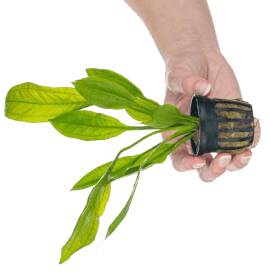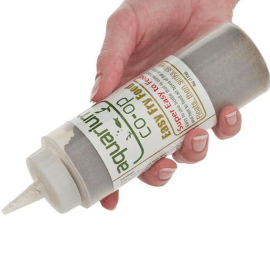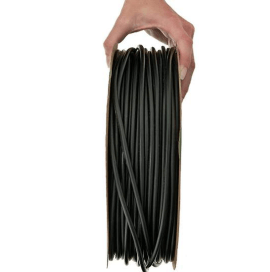Top 5 Bottom Dwellers
If you are in the market and looking to add a few bottom-dwelling cleaners to your tank, this list is for you! Our list of the Top 5 Bottom Dwellers gives you a list of our top choices for the best fish that you can add to your tank to keep it functional and attractive.
5. Geophagus

Our number 5 top pick is the Geophagus. Geophagus translates to sand-sifter or eartheater. These fish will go to the bottom of your tank, grab mouthfuls of sand, sift through it, and then spit it out. This process will be repeated all day long. This is a larger fish based on the species and they can range anywhere from 6-10 inches. They come in several varieties and each variety has their own attitude. Some of these fish are more aggressive while others are peaceful. You might notice you are using a gravel vac less because these fish will do all the dirty work for you. One thing to be cautious with is that they can dig up your plants. To protect your plants, it is best to place some big rocks around the base for protection. Otherwise, these little worker bees will consistently keep your tank clean.
4. Synodontis Lucipinnis

Our number 4 pick is a specific fish called the Synodontis Lucipinnis. These fish are about 3 inches long and tend to swim like sharks. They are unique looking and like to hide. The Synodontis Lucipinnis is part of the catfish family, which means they are also nocturnal. These fish are great cleaners and will happily clean the bottom of your tank. When they are smaller sized they will swim about mid-way up and to the top of your tank. Their unique look sometimes pushes people to keep them as a single centerpiece fish but it is best to keep them in groups of 3 or more. They lay on the pricier side at around $18 per fish, so be sure that you are willing to invest in their care.
3. Loaches
Our number 3 top pick is the Loach Family. Loaches are scavengers that come in many different varieties. With many different species to choose from, you should be able to find one that can be easily integrated into your tank. Here are some of the different types of loaches that are our favorite bottom dwellers.
Clown Loach

The Clown Loach is quite active in big groups. You will really notice their energy if you keep them in a group of 10 or more. They are, however, a large fish with most coming in at about 12-14 inches as adults. They clean off the bottom and go through the substrate to look for food. These require large tanks.
Kuhli Loach

The Kuhli Loach is significantly smaller loach that comes in at about 3 ½ inches. They have a striped body that is long and slender like an eel. They are scavengers and nocturnal, so to catch a glimpse of these fish, you’ll have to take a peek at night time when they emerge. In most stores, the Kuhli Loach sell for about $3 per fish and they like to eat black worms but will mostly scavenge. These loaches are extremely plant friendly and won't eat snails. They like to do their own thing and you can be sure that adding these fish to your aquarium will bring a unique look, without sacrificing the lives of your snail buddies.
Dwarf Chain Loach

This is our favorite for planted tanks. These fish will go up to about mid-water and are as active as clown loaches. Likewise, it’s best to keep them in a school. At $12 per fish, they are on the pricier end, but they are extremely personable and enjoyable to watch. If you have a snail problem, these fish will happily take care of that for you.
Zebra Loach

Lastly, the Zebra Loach is a great choice if you are wanting to add a little trio or more to your tank. These fish are best in groups of 3 or more and grow to be about 4 inches. Like others listed, these fish are plant safe.
2. Shrimp

Our number 2 top pick is shrimp. Shrimp come in at number 2 because their only downfall is that they can’t live with everything. Shrimp can and will be eaten by most larger fish. They come in a variety of colors and are excellent cleaners that will comb through everything including algae! Their small size allows them to clean through all the nooks and crannies. They like to reproduce, so you should expect more to appear in your tank with time. Shrimp are one of the greatest bottom dwellers and scavengers that you can add to your tank, if, they are in a tank with compatible mates.
1. Corydoras

At the top of our list are Corydoras. There are many varieties of Corydoras that you can add to your tank. Most of them are small but it is good because it is best if they live in groups of 6 or more. Varieties that range in the size of about 2-3 inches include the Corydoras Labrosus, Salt and Pepper Corydoras, Albino Corydoras, Bronze Corydoras, Sterbai Corydoras, Julii Corydoras (which are unique with a reticulation pattern), and Panda Corydoras. If you are wanting to add a large school to your tank, a dwarf Corydora may suit you best. The Corydora axelrodi is a smaller fish and can easily be added in large numbers. Keep in mind that some Corydoras are more expensive than others. The Green Laser Corydora usually sells for about $17 per fish.
There are hundreds of species that you can choose from and these little armored catfish usually can’t be beat by others. They like to live in their little schools and scavenge the bottom of the tank. They are extremely personable and likable.
Bonus: Dwarf Anchor Catfish

One bonus fish to add to the list is the Dwarf Anchor Catfish. They are a small type of catfish that grow to be about 1 ¾ inch. However, Dwarf Anchor Catfish are rare and uncommon, so finding them in store may be a challenge.
Conclusion
When it comes to deciding on which bottom dweller will best suit your tank it is important to balance finding a fish that will suit what you already have but also one you will enjoy personally. You should buy a fish that you want to keep and not a fish that is only used for cleaning. Buying a fish only to be used to clean is similar to adopting a dog just so it can eat food spilled on the floor. You should be motivated, interested, and invested in any fish you add to your tank. All tanks need to be functional and clean, but they are also used for personal enjoyment as well. So, remember to choose what you are attracted to and one you will love!




